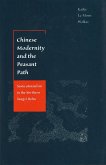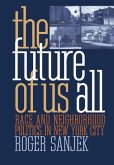How can we account for the durability of subsistence farming in China despite six centuries of vigorous commercialization from 1350 to 1950 and three decades of collectivization between 1950 to 1980? Why did the Chinese rural economy not undergo the transformation predicted by the classical models of Adam Smith and Karl Marx? In attempting to answer this question, scholars have generally treated commercialization and collectivization as distinct from population increase, the other great rural change of the past six centuries. This book breaks new ground in arguing that in the Yangzi delta, China's most advanced agricultural region, population increase was what drove commercialization and collectivization, even as it was made possible by them. The processes at work, which the author terms involutionary commercialization and involutionary growth, entailed ever-increasing labor input per unit of land, resulting in expanded total output but diminishing marginal returns per workday. In the Ming-Qing period, involution usually meant a switch to more labor-intensive cash crops and low-return household sidelines.
Bitte wählen Sie Ihr Anliegen aus.
Rechnungen
Retourenschein anfordern
Bestellstatus
Storno








